How to re-brand the Comet Client
Comet is fully re-brandable. This guide covers re-branding options for the Comet Backup Client.
There is a separate guide on re-branding the Comet Management Console and Storage Gateway.
The Comet Backup Client software, installer, and web interface are all re-brandable.
When you make changes to your branding, it is required to update the desktop clients for the changes to apply. It is possible to update the branding for multiple devices at once using the Bulk device upgrade feature.
Video tutorial
Here is a quick video tutorial to walk you through the process of re-branding the Comet Management Console and Client software.
Comet Backup Client branding
The Comet Backup Client can be re-branded in the Comet Management Console
Head to ‘Settings’ and select ‘ Backup Agent Branding’ to access the options.

Comet Client Software re-branding options
Product name
The Product name is what the Comet Backup Client will be named (the shortcut, start will automatically change to this name). The software will also install in Windows to "C:\Program Files\Product Name".
Note: If you change the Product Name field, any existing, and, possibly incorrectly-named, installation directories will be re-used if the client software is reinstalled.
The desktop client will need to be uninstalled completely. The incorrectly-named "C:\Program Files\Product Name" directory will be removed. A new installation of the branding-updated client software will create a new brandnamed-directory in C:\Program Files.
Company name
The Comet client will refer to the Company name when making changes within the Comet client.
Comet Storage name
The Comet Storage name will replace the Comet Storage branding name in the Comet Management Console and the Comet Backup desktop application. The icon will be replaced with a generic cloud icon.
Help URL
Help URL adds a Help Tab on the software with URL of your choice. This feature enables personalization on the software by providing additional assistance to the end user.
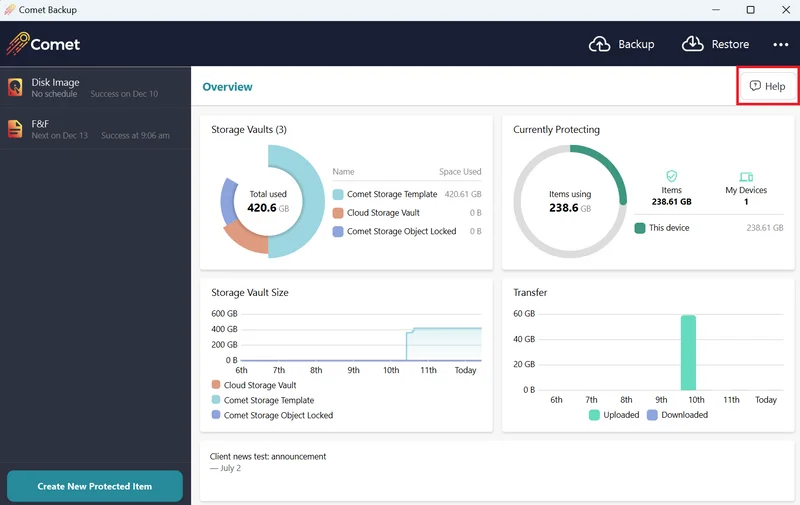
You can choose to show the content in:
An embedded frame
Comet will render the content directly within the Comet Backup application window. You can take advantage of this fact to design your help website in a way that matches Comet's design theme. The webpage content may be a simple email address, phone number, or plain text content; but because any web features are available, it may also include rich experiences such as contact forms, videos, and live chat features.
Comet will try to render the embedded content with the operating system's platform rendering engine (Edge Webview2 if available, otherwise the latest installed IE / MSHTML engine). If no suitable platform rendering engine is available, Comet will fall back to opening the device's default web browser in a popup.
A pop-up browser
The default web browser will be opened.
Default Server URL
The Default server URL will prefill the Server field when logging into the Comet client.
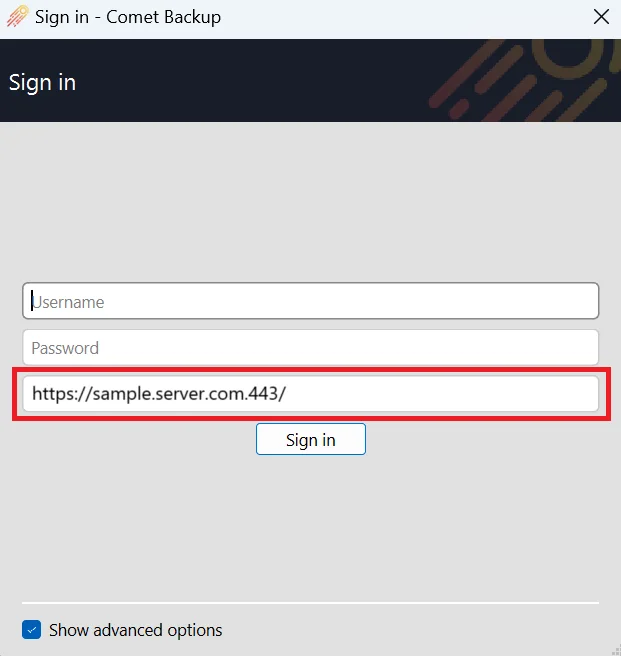
Registration URL
This allows you to create a custom sign-up workflow that calls into the Comet Management Console API to actually create the account. This offers an MSP the chance to capture other information such as email address, contact details, and billing / payment details.
By deferring to an external URL for new account registration, this system is deliberately flexible. For instance, it would be possible for MSPs using this system to
- offer the choice of multiple plans, or
- create the account on a specific Comet Management Console, or
- automatically request a first storage vault, or
- create a "free trial" system.
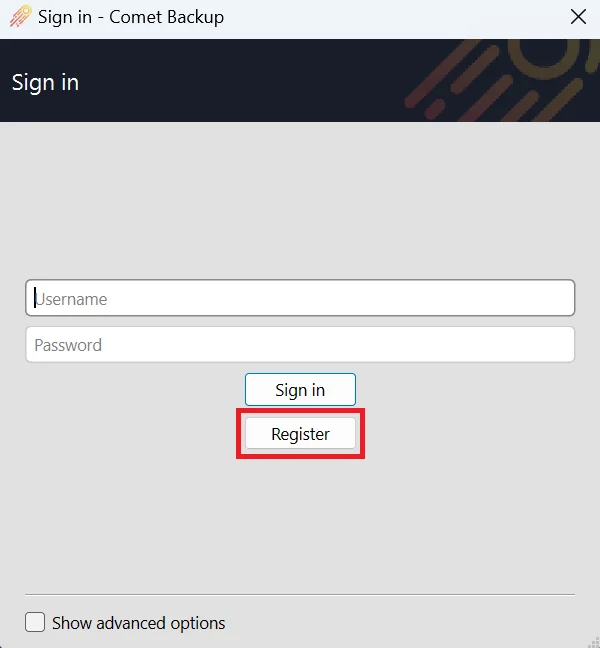
Icons (Windows & macOS)
You can set a custom icon to re-brand Comet Backup software on Windows and macOS.
On Windows, the file should be in .ico format. On macOS, the file should be in .icns format. PNG and JPEG files are also supported, by automatically converting them to the required ICO/ICNS format. When using a png/jpg image, the supplied image should have a square shape.
We recommend using a 512x512 image as this will preserve the most information when the image is scaled down to smaller sizes.
EULA
Add an End User License Agreement during the installation process of the client software (not mandatory).
Logo image
This image will be displayed in the top-left corner of the software. Make sure the to use an image sized 100 x 32.
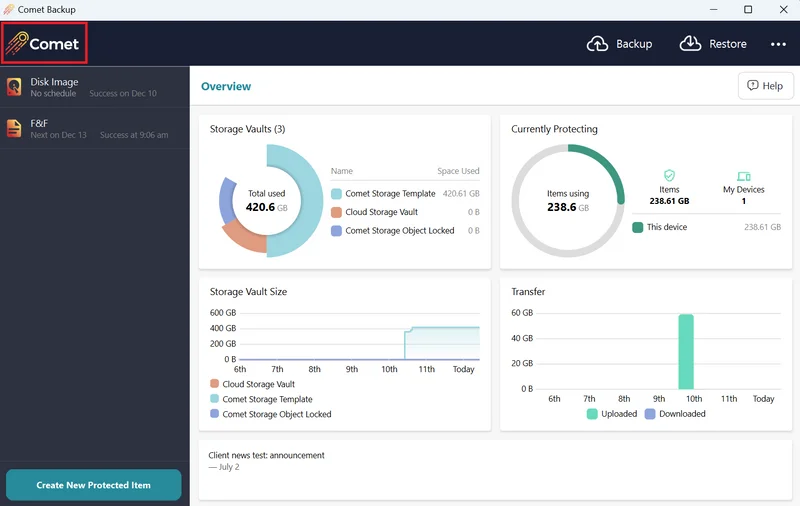
Tile image
This image will be displayed in the Windows 10 start menu. The tile background can also be changed using hex format (e.g. #FFFFFF).
Make sure the to use an image sized 150 x 150.
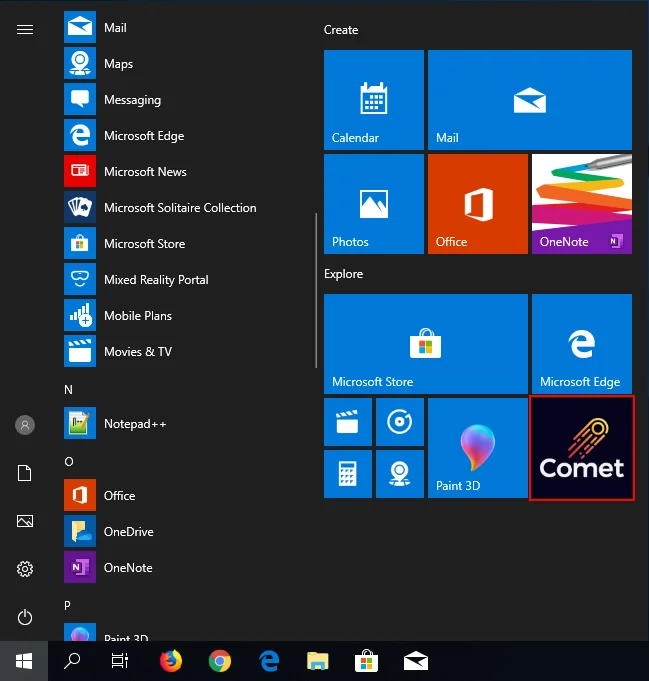
Background Logo
Choose to hide the Comet Backup branding from the background.
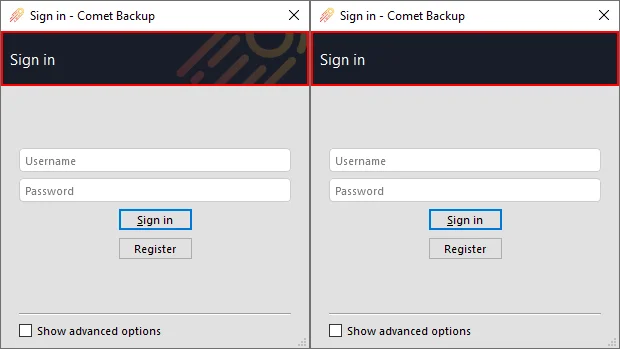
App icon image
This image will be displayed as the icon in package managers (e.g.: in Synology DSM’s Package Centre). This image will be resized as appropriate based on the package manager relevant to each installer.
Make sure to use an image sized 256 x 256.

Synology's icon cache
Synology DSM has an icon cache in which it stores a copy of the configured icon for a package. When a new copy of an existing or previously-installed package is installed, Synology DSM will use the cached copy of the icon rather than the icon from the new copy of the package.
This can cause it to appear as if changes to the "App icon image" branding setting have not been respected; it is actually caused by a stale icon being used by Synology DSM.
To clear the icon cache, follow these steps:
- Uninstall the Comet Backup package
- SSH into the Synology NAS
- Clear the cache using
sudo rm -r /var/cache/pkglist.tmp/ - Reinstall the Comet Backup package
Codesigning
Windows and macOS have introduced measures to encourage distributing code-signed installers. We recommend configuring codesigning to streamline the process of Comet Backup software installation. For more information, please refer to our separate codesigning guide.